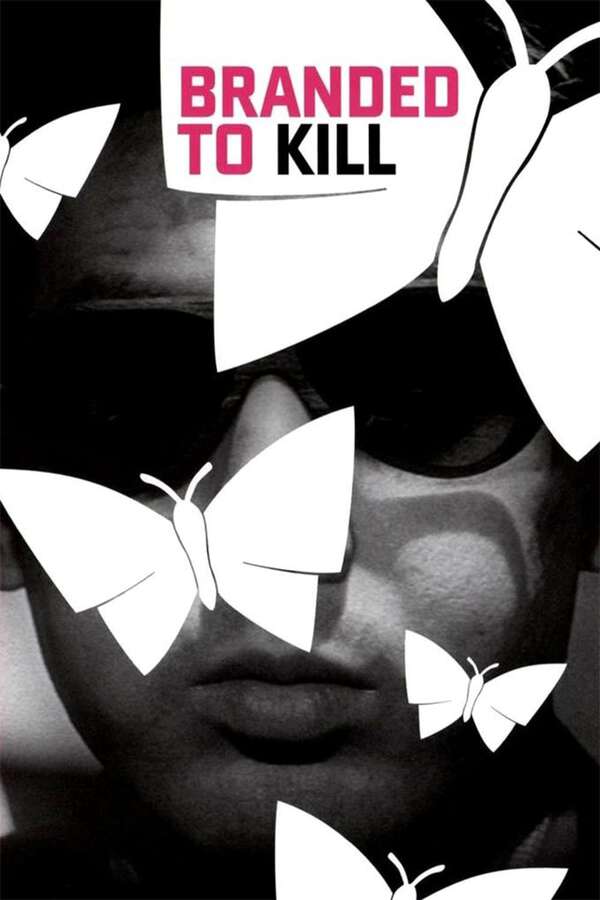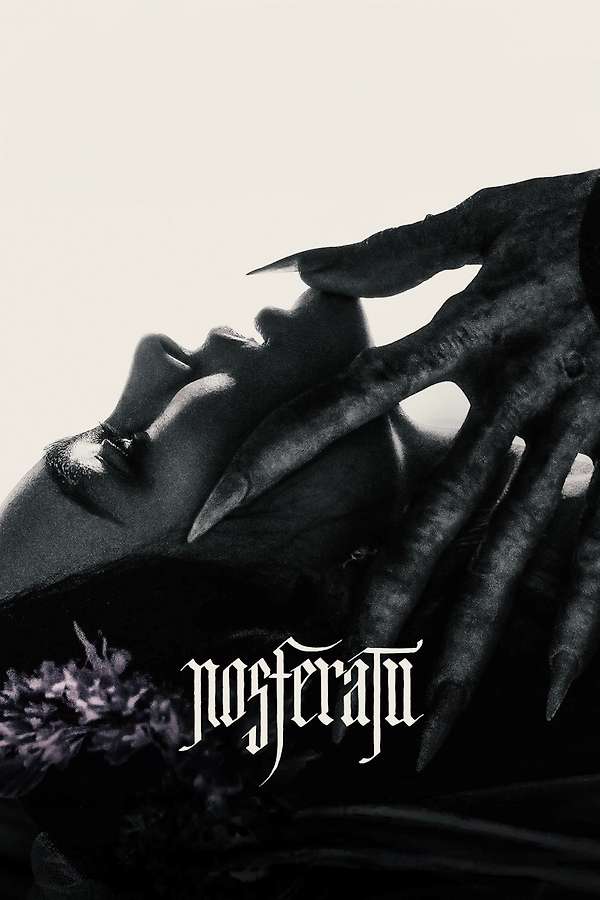4v291o
Watched on Thursday June 5, 2025.
]]>
Watched on Tuesday June 3, 2025.
]]>
Watched on Saturday May 31, 2025.
]]>
Watched on Saturday May 17, 2025.
]]>
Watched on Friday May 16, 2025.
]]>
We eventually succumb to time, it's true, but time depends on us. We carry it in our muscles and genes, it on to the next set of time-factoring creatures, our brown-eyed daughters and jug-eared sons, or how would the world keep going. Never mind the time theorists, the cesium devices that measure the life and death of the smallest silvery trillionth of a second ... We were the only crucial clocks, our minds and bodies, way stations for the distribution of time.
That which we are, we are;
]]>
Watched on Tuesday May 13, 2025.
]]>
A shift from his 1930s films, after the wartime regime banned many of the characters and subjects Naruse was used to working with –– "modern" women, "decadent" behavior like women smoking, and eventually almost any of the materialist concerns animating the shoshimin-eiga genre of lower-middle class women's lives. Naruse was a modernist, working under a regime that all but banned modernism.
Hideko, the titular bus conductor, narrates the Edo-era history of a rural landscape, thus keeping in line with the letter of national (and nationalist) policy. But it's not a remarkable landscape, really; no filmic signposts of past glory. And the tour guide's narration of history is dark, not celebratory. Interesting – and incongruous – set against the regime’s ultranationalism.
Naruse doesn’t have many visual signatures, relatively, and I love that one of the most distinctive is shoes with holes. Poverty was personal for him; he lived it, he re it, he understands it. And with that one shot spliced into the first scene, you understand Hideko.
]]>
Watched on Wednesday January 8, 2025.
]]>
Beautiful. Hands as synecdoche, hair out of place, the lovers walk, the lover's look.
]]>
Sometimes, Naruse's staging is immaculate.
]]>
Watched on Saturday April 19, 2025.
]]>
Watched on Friday April 11, 2025.
]]>
By the end, so much has happened, and yet nothing is changed.
Although officially based on a story by Inoue Tomoichiro, Naruse itted he took a "hint" from the story "Fallen Women" by Hayashi Fumiko, whose writing gave the basis for so many of his best works. This feels apiece with those, in the dynamics between women and the interaction of hope, autonomy, and disappointment. Tanaka Kinuyo's Yukiko is just-so-slightly out of step with the new culture. The film leaves her moving forward, over a bridge with her son, into an uncertain future that seems not to want her. To no small degree, she stands in for something much larger in postwar Japan.
Ginza Cosmetics will be echoed in Naruse's other films about working women, most simply in one element: Yukiko endures.
]]>
Watched on Monday April 7, 2025.
]]>
His technique here is bold – much more energetic than his mature works – but the shot-to-shot editing already has his distinct sense of "flow." More than in the sound films, Naruse's camera movement and editing are energetic and even flamboyant. Both are always related to the emotional expression of the subjects, the buried feelings of the character coming out in the camera. He uses one movement in particular, a rapid track-in to a character's face; it's not what I expected from my first early Naruse, but it was powerful. I wonder if he did it to compensate for what film lacked (the chance to create empathy through sound)
This was the first time I noticed footwear as a motif, although it was probably there in the shabby shoes of Naruse's 1950s salarymen husbands. Naruse is a materialist; the damaged socks and shoes reflect a realist aesthetic and, probably, the experience of his childhood. Aside from the footwear shots, there are a number of other close-ups on material things: food, sake, baskets, and a bit of (probably inadvertent) product placement for Meiji Chocolate. The object shots have a functional purpose in the montage, but certainly a thematic one too.
As a last note: the hospital scene is exceptional.
]]>
Watched on Saturday March 29, 2025.
]]>
Sometimes, to be so close to it is enough.
]]>
Watched on Tuesday March 18, 2025.
]]>
Watched on Tuesday March 18, 2025.
]]>
Watched on Saturday March 15, 2025.
]]>
Someday, I’ll write a thesis on Obayashi’s ghosts.
His movies are haunted; in fully seven that I’ve seen, there’s someone spiritually out-of-place — a ghost, a person out of time, the vampiric spectres of House and Hanagatami, the kind woman of Seven Weeks. Over and over again, he returns to that motif.
With only a few exceptions, Obayashi’s “ghosts” are benevolent; they lead the living to understanding, and sometimes even peace. For their part, it’s a chance to reconcile with regrets left behind. And for both the living and the dead, and the time travelers and the spirits, it’s a chance to say goodbye.
It’s a gesture of mercy from a child of Hiroshima.
]]>
The Youtube version plays at 1.25x speed, and yet the fight choreography is still crystal-clear and easy to follow. Not sure I would've noticed the technical quality at normal speed; credit to Yuen Woo-Ping & co.
]]>
Watched on Tuesday March 4, 2025.
]]>
I love this like I love Ashes of Time: It’s so messy and solipsistic, with such unabashed grand romanticism, that it just works.
]]>
Watched on Friday February 28, 2025.
]]>
Deeply Fordian (in its way) and damn near perfect. First instinct is it’s in the running for the best-constructed Kurosawa movie I’ve seen.
]]>
Watched on Sunday February 23, 2025.
]]>
The missing link from Godard -> Tam -> Wong Kar-Wai
]]>
Watched on Wednesday February 19, 2025.
]]>
More or less spent the whole evening basking in it afterward.
]]>
In Naruse's later films with Takamine Hideko, they'd read through the script together to pick out the lines they wanted removed; anything she could replace with a gesture or a glance, they would. (Usually, a glance without eyeline continuity; when men and women talk in Naruse films, the eyelines don't match. When women talk to each other, they do.)
I think of Naruse as a great director of actors, but he was apparently known to give no at all. But what he does, better than virtually all his male contemporaries, is empathize with the full breadth of women's experiences –– isolation, frustration, and resignation, but autonomy and resistance, too. And I think the explanation is there in his approach with Takamine: he gave his actresses space to exist, without being objectified, as fully-formed human beings with complicated emotions and lives.
My husband is sitting at the dining table. I go to the kitchen to cook the miso soup. Yesterdays and tomorrows, 365 days a year, we have the same mornings and nights. I wonder if the lives of women are simply to get older and will end in the kitchen and the table.
Naruse doesn't aestheticize suffering in the way that, say, Mizoguchi does. Repast remains grounded in the set details of the lower-middle class home and the circumstance of the woman who occupies it. Naruse focuses on unhappy marriages not from an essentially pessimistic worldview, but from a more complete understanding of the subtle yet pervasive ways in which patriarchal structures limit women's autonomy and self-expression.
In my favorite shot of the movie, Michiyo (Setsuko Hara) pauses while putting a blanket away; her face cycles through five emotions in half as many seconds, and she doesn't say a word.
The (supposedly happy) ambivalent ending is not present in the unfinished novel, and the screenwriter suggested it was studio-imposed. It feels that way. Its contradictions are in keeping with certain contemporary Hollywood melodramas; more was stirred up than could possibly be settled. As Laura Mulvey wrote about Douglas Sirk, if no closure is possible, then any reconciliation is closer to "mute surrender to society's overt pressures" and "defeat by its unconscious laws."
]]>
Watched on Saturday February 15, 2025.
]]>
Watched on Thursday February 13, 2025.
]]>
There was a German sociologist, Kracauer, who wrote that memory and photography were natural opposites. That the edges of a memory fade, the details blur, the faces become indistinct, but the emotion at the heart of it remains. But a photograph steps out of time. The details of the image never change, but the person in it will; the setting of it will; and in time, it won’t be recognizable.
From the moment it’s taken, it’s already growing old.
11.25.98 - 03.02.22
]]>
Watched on Thursday February 6, 2025.
]]>
A collective of great artists worked behind the scenes to make this – on the screenplay, the choreography, the set design, and the lighting – and the voice of each one comes through clearly. A shade more serious than most of its genre, a more romantic tone, and either it was actually filmed outside or it does a great job of replicating it. Incandescent skies, rippling seas, and living forests. A lot of Hong Kong wuxia took influence from King Hu, but this is one of the first (that I've seen) to capture some of his spirit. A cut above.
]]>
Watched on Monday February 3, 2025.
]]>
Watched on Monday February 3, 2025.
]]>
Watched on Saturday February 1, 2025.
]]>
Watched on Monday January 27, 2025.
]]>
Watched on Sunday January 26, 2025.
]]>
I went into the theater looking for a purely aesthetic experience, and I generally got what I wanted. I think each of the thematic lines were underdeveloped (although I gained some appreciation reading the perspectives of friends who thought otherwise). I half-tuned out the dialogue, although what I caught didn't strike me as great. But the images are beautiful – sometimes stunning – and that's what I came for.
Eggers seems exactingly strict about details, both in historicity and homage. I don't mind the former; I think it's essential for his project. It's the homage I'm less certain about.
I think Eggers has a close understanding of one part of the 1922 Nosferatu's exceptionalism. It's proof-of-concept for film itself, as a distinct medium, as something more than a mix of photography and stage theater. It's a demonstration of film made with only light and shadow. Eggers knows this. He leans into it heavily. But something leaches out in the photocopy.
My other issue, I came to only after sitting with this a while. The 1922 film isn't just an expressionistic show; it's a World War I movie. It's about invisible death arriving in the trenches –– rats and disease –– and the unending thirst for blood. It's about the European aristocracy, parasites on the continent, feeding off the young. Ultimately, it's about the shadows at the limits of human understanding. Eggers can describe those shadows, photograph them from a distance, but he's too much of a rationalist to truly approach them. In that way, Eggers and Hutter stand on the same side of the veil.
They can't experience the uncanny unmediated, and so, to our loss, nor can we.
]]>
Watched on Monday January 20, 2025.
]]>
A small miracle this was made, and a larger one that it was recovered and restored. I'm glad I got to see it in a theater.
]]>
Jaideep Ahlawat is a wonderful character actor; after the beautiful Three of Us, I'd be willing to try almost anything he's in.
This was decent, with a weaker beginning but a stronger (more interesting) ending than I expected. I believe the only honest spy movies are the nihilistic ones, and this got much closer than I thought it would.
]]>
Watched on Friday January 3, 2025.
]]>
Watched on Sunday December 29, 2024.
]]>
Watched on Wednesday December 25, 2024.
]]>
Watched on Monday December 23, 2024.
]]>- When a Woman Ascends the Stairs
- I Was Born, But...
- The Story of the Last Chrysanthemum
- Ikiru
- The Life of Oharu
- Sound of the Mountain
- Sansho the Bailiff
- Tokyo Twilight
- Floating Weeds
- Good Morning
...plus 285 more. View the full list on Letterboxd.
]]>Esoteric collaborative watchlist
- Fallen Angels
- Bicycle Thieves
- Bo Burnham: Inside
- The Silence of the Lambs
- Long Day's Journey into Night
- Andhadhun
- Tokyo Story
- The Lord of the Rings: The Fellowship of the Ring
- The Lord of the Rings: The Two Towers
- Il Mare
...plus 330 more. View the full list on Letterboxd.
]]>- Pather Panchali
All-time great Satyajit Ray movie (West Bengal)
- Charulata
Satyajit Ray but upper-class period piece.
- Duvidha
- Andhadhun
Thriller / Black Comedy / Independent Cinema, worth seeing for the acting (Tabu)
- The Lunchbox
Independent romantic movie with a thoughtful ending, with two of the best 21st-century Indian actors (Irrfan Khan and Nawazuddin Siddiqui)
- Jodhaa Akbar
Historical epic / romance, ahistorical but in a positive way (theme of tolerance/pluralism)
- Super Deluxe
Tamil movie, multiple intertwined stories
- Haider
Hamlet adaptation set in Kashmir; "to be or not to be" within a territory that, legally, only half exists. Great acting and directing.
- Pyaasa
Classic movie from Mumbai, note that in Hindi, pyaasa = thirsty and pyaar = love
- RRR
Excellently-directed action epic with concerningly right-wing undertones.
...plus 652 more. View the full list on Letterboxd.
]]>- Vampyr
- Ordet
- Children of Paradise
- The Rules of the Game
- L'Atalante
- The ion of Joan of Arc
- Au Hasard Balthazar
- Gertrud
- L'Avventura
- Blow-Up
...plus 6 more. View the full list on Letterboxd.
]]>Barely ordered, except for the first two.
]]>I normally don't make best-new-release lists but this year I finally saw some new movies, and it felt like a waste not to. Mostly positive stuff! Two exceptional movies, and more good ones below. Between All We Imagine and Girls Will Be Girls, it was pretty clearly the year (/fall season) of Kani Kusruti.
- All We Imagine as Light
- Sing Sing
- One Day
- Inside the Yellow Cocoon Shell
- Girls Will Be Girls
- Santosh
- Lost Ladies
- Nosferatu
- Crew
- My Old Ass
...plus 4 more. View the full list on Letterboxd.
]]>Including one revelatory rewatch (Uncle Boonmee). Loosely ranked.
- Uncle Boonmee Who Can Recall His Past Lives
- Mga Kuwentong Barbero
- After Life
- Malcolm X
- Rang De Basanti
- Joyland
- Kumbalangi Nights
- The Namesake
- Badhaai Do
- The Ruins
...plus 22 more. View the full list on Letterboxd.
]]>- In Space
- Tropical Malady
- Cemetery of Splendor
- Memoria
- Uncle Boonmee Who Can Recall His Past Lives
- Syndromes and a Century
- Blissfully Yours
- Vive L'Amour
- Goodbye, Dragon Inn
- Days
...plus 35 more. View the full list on Letterboxd.
]]>Films with excellent ensemble acting, defined as at least 4 people giving stellar performances.
- Maqbool
- Yi Yi
- Seven Samurai
- The Godfather
- The Lord of the Rings: The Fellowship of the Ring
- Days of Being Wild
- An Elephant Sitting Still
- Shoplifters
- Children of Paradise
- Winter Light
...plus 10 more. View the full list on Letterboxd.
]]>- 2046
- Days of Being Wild
- Decision to Leave
- The Great Gatsby
- Green Snake
- The Handmaiden
- Hero
- The Heroic Trio
- In the Mood for Love
- Irma Vep
...plus 16 more. View the full list on Letterboxd.
]]>- RRR
- Om Shanti Om
- Jab Harry Met Sejal
- The Proposal
- RoboCop
- Shrek
- Shrek the Musical
- Twilight
- Hera Pheri
- Irma Vep
...plus 16 more. View the full list on Letterboxd.
]]>Priority watches for the new place
- Citizen Kane
- The Third Man
- Mulholland Drive
- Mirch Masala
- Duvidha
- Y Tu Mamá También
- The Princess Bride
- Pride & Prejudice
- Bajirao Mastani
- Maqbool
...plus 10 more. View the full list on Letterboxd.
]]>- Shoah
- Satantango
- As I Was Moving Ahead, Occasionally I Saw Brief Glimpses of Beauty
- Labyrinth of Cinema
- That Day, on the Beach
- Why Has Bodhi-Dharma Left for the East?
- Ritual
- Synecdoche, New York
- A City of Sadness
- Eternity and a Day
...plus 4 more. View the full list on Letterboxd.
]]>- Yi Yi
- The Tree of Life
- In the Mood for Love
- Y Tu Mamá También
- An Elephant Sitting Still
- Moonlight
- Cemetery of Splendor
- Millennium Actress
- Still Walking
- Casting Blossoms to the Sky
...plus 4 more. View the full list on Letterboxd.
]]>- I Told Sunset About You
- Mga Kuwentong Barbero
- The Trial
- Moral
- Tie Xi Qu: West of the Tracks
- Kadaisi Vivasayi
- Kaiba
- Himala
- Devils on the Doorstep
- Manoel’s Destinies
...plus 259 more. View the full list on Letterboxd.
]]>Some films available only on youtube – links in list notes.
- Seven Weeks
- August in the Water
Found it on rarelust dot com
- Casting Blossoms to the Sky
- An Elephant Sitting Still
- Aparajito
- Ashes of Time
- Like Stars on Earth
- By the Time It Gets Dark
- Stray Dogs
- Bicycle Thieves
...plus 21 more. View the full list on Letterboxd.
]]>2021 standout first watches, ranked
- Yi Yi
- The Tree of Life
- The Hand
- Millennium Actress
- Still Walking
- Fallen Angels
- Cemetery of Splendor
- Days
- Days of Being Wild
- The Flavor of Green Tea Over Rice
...plus 7 more. View the full list on Letterboxd.
]]>